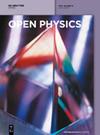丙烯腈-丁二烯-苯乙烯聚合物化学蒸汽喷射加工的多反应优化和工艺能力分析:揭开形态的面纱
IF 1.8
4区 物理与天体物理
Q2 PHYSICS, MULTIDISCIPLINARY
引用次数: 0
摘要
三维(3D)打印技术的应用使制造商的生产率和运营效率显著提高。增材制造(AM)是一种制造技术,意味着改变传统的材料去除方法。增材制造技术的基本思想是层层逐步堆积(逐层堆积)。在传统方法中,由于工具和工件之间的直接相互作用,每个部件都可能产生不利影响,导致热量因摩擦而流失。利用 3D 打印技术超越传统加工方法,标志着多个领域的新发展。这种方法涉及利用非常规技术制造部件。本研究的主要目的是研究专门应用于丙烯腈-丁二烯-苯乙烯(ABS)材料的化学蒸汽喷射钻孔技术。目的是提高 ABS 工件的表面特性或表面光洁度 (SF) 和尺寸精度 (DA)。通过实验和数据分析,对蒸汽喷射钻孔 (VJD) 工艺的可靠性、可重复性和精确性进行了评估。研究采用田口 L9 实验设计法进行了一系列测试,旨在分析压力、流速和间距这三个自变量的影响。研究人员采用了多反应优化方法,以获得最佳参数组合,从而使 SF 与 DA 的效果更佳。因此,成果的整体吸引力得以实现。通过在最佳设置下对基底进行测试,评估了该工艺的能力和可靠性。在基底的多个位置测量了表面粗糙度和圆度。研究结果表明,每个响应参数的工艺能力指数(C p 和 C pk)都超过了 1.33,C pk 值也超过了 1。对直方图和能力指数的分析表明,在优化条件下进行 VJD 方法时,可将其归类为 ABS 材料加工的统计控制方法。本文章由计算机程序翻译,如有差异,请以英文原文为准。
Multiresponse optimisation and process capability analysis of chemical vapour jet machining for the acrylonitrile butadiene styrene polymer: Unveiling the morphology
The implementation of three-dimensional (3D) printing technology has culminated in a notable rise in productivity and operational effectiveness for manufacturers. Additive manufacturing (AM) is a manufacturing technology that implies an alteration from the conventional approach of material removal. The fundamental idea underlying the AM technique is the gradual buildup of layers (layer-on-layer accumulation). In conventional approaches, every component can have detrimental implications due to the direct interaction between the tool and the workpiece, leading to the loss of heat through friction. The utilisation of 3D printing as a way to surpass conventional processing methods signifies a novel development in several sectors. This method involves the utilisation of unconventional techniques for the fabrication of components. The primary objective of this research is to investigate the chemical vapour jet drilling technique specifically applied to acrylonitrile butadiene styrene (ABS) materials. The intent is to enhance the surface characteristics, or surface finish (SF), and the dimensional accuracy (DA) of ABS workpieces. An evaluation regarding the reliability, repeatability, as well as preciseness of the vapour jet drilling (VJD) process is conducted via the utilisation of experiment and data analysis. The study employed a Taguchi L9 design of experiments to carry out a series of tests aimed at analysing the implications of three independent variables: pressure, flow rate, and standoff distance. The researchers employed a multiresponse optimisation approach to attain an optimal combination of parameters that resulted in a superior SF with DA. Consequently, the overall appeal of the outcome was reached. The process’s capabilities and dependability were assessed by conducting tests on the substrates at their optimal settings. Surface roughness and circularity were measured at numerous locations on the substrates. The study determined that the process capability indices (C p and C pk ) had values over 1.33 for each of the response parameters, with C pk values also exceeding 1. The analysis of histograms and capability indices demonstrates that the VJD method, when conducted under optimised conditions, may be categorised as statistically controlled for the processing of ABS materials.
求助全文
通过发布文献求助,成功后即可免费获取论文全文。
去求助
来源期刊

Open Physics
PHYSICS, MULTIDISCIPLINARY-
CiteScore
3.20
自引率
5.30%
发文量
82
审稿时长
18 weeks
期刊介绍:
Open Physics is a peer-reviewed, open access, electronic journal devoted to the publication of fundamental research results in all fields of physics. The journal provides the readers with free, instant, and permanent access to all content worldwide; and the authors with extensive promotion of published articles, long-time preservation, language-correction services, no space constraints and immediate publication. Our standard policy requires each paper to be reviewed by at least two Referees and the peer-review process is single-blind.
 求助内容:
求助内容: 应助结果提醒方式:
应助结果提醒方式:


